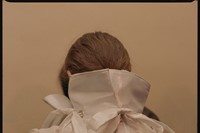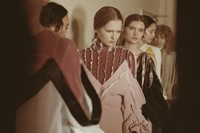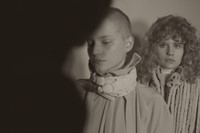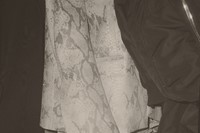From the windows of Glenn Martens’ fifth-floor studio (which happens to sit above the famed music venue Gibus), you can see an alternative view of Paris. The 10th and 11th arrondissements lay before you, teeming with an energy that’s vastly different from their more polished counterparts in the 1st and the 8th. This is where Y/Project has been based since the original founders, designer Yohan Serfaty and businessman Gilles Elalouf, started their menswear label back in 2010. When Serfaty sadly passed away in 2013, Elalouf called upon Martens, who had been working on his own, eponymous womenswear label. In a short period of time, under Martens' direction, Y/Project has evolved into a different beast from its conceptually brooding beginnings – so much so, that the label was shortlisted for the esteemed LVMH Prize this year.
Martens has just emerged from a three-day marathon of staging his first womenswear show for Y/Project on Tuesday, followed by two days of presenting his collection to fashion industry luminaries at the LVMH Prize showcase. Suffice to say, he is exhausted – but happy. “When I was explaining the collection, it was great to see people really smile and be like 'Oh it’s cool, it’s interesting.' It felt like confirmation; feedback, so that you know you’re doing good.” It’s certainly a positive light at the end of a strange tunnel for Martens; a tunnel which began in Bruges in Belgium, a country which unsurprisingly informs his own personal aesthetic. “Belgium is not a really beautiful country – you have to find the beauty in the hidden parts of it,” said Martens. “The charm is not like that of Italy or France, when it’s in your face. There is always an absurd detail in it, and there is a mix of everything which, for me, is super important… like, something very trashy about it, and also something very austere.”
Martens is yet another name to add to the long and illustrious fashion history of his Belgian compatriots before him, who deftly handle the balance between classicism and absurdity. But Martens grew up knowing nothing about this world. “I was really geeky actually and I was obsessed by history. I wanted to become an Egyptologist or archaeologist.” After completing his first degree in interior design, Martens stumbled upon the Antwerp Academy of Arts on a school trip and duly applied. “I really didn’t have anything fashion in my background, but then I think they always take two or three students who are like model sizes! And I’m like 1.85m!” he said with a wry smile. Incidentally, Martens was once a fit model for designer Demna Gvasalia, who was three years ahead of him at the school.
Following his graduation, Martens gained work experience at Jean Paul Gaultier and Bruno Pieters, which led him to assist Serfaty, from whom he would inherit Y/Project. “Out of respect for Yohan, at first we wanted to stay in the original direction of the brand, while building up a new story. We did a transition collection between Yohan’s style and what I wanted to envision for the brand. Then, last year, we decided to go for what we wanted.”
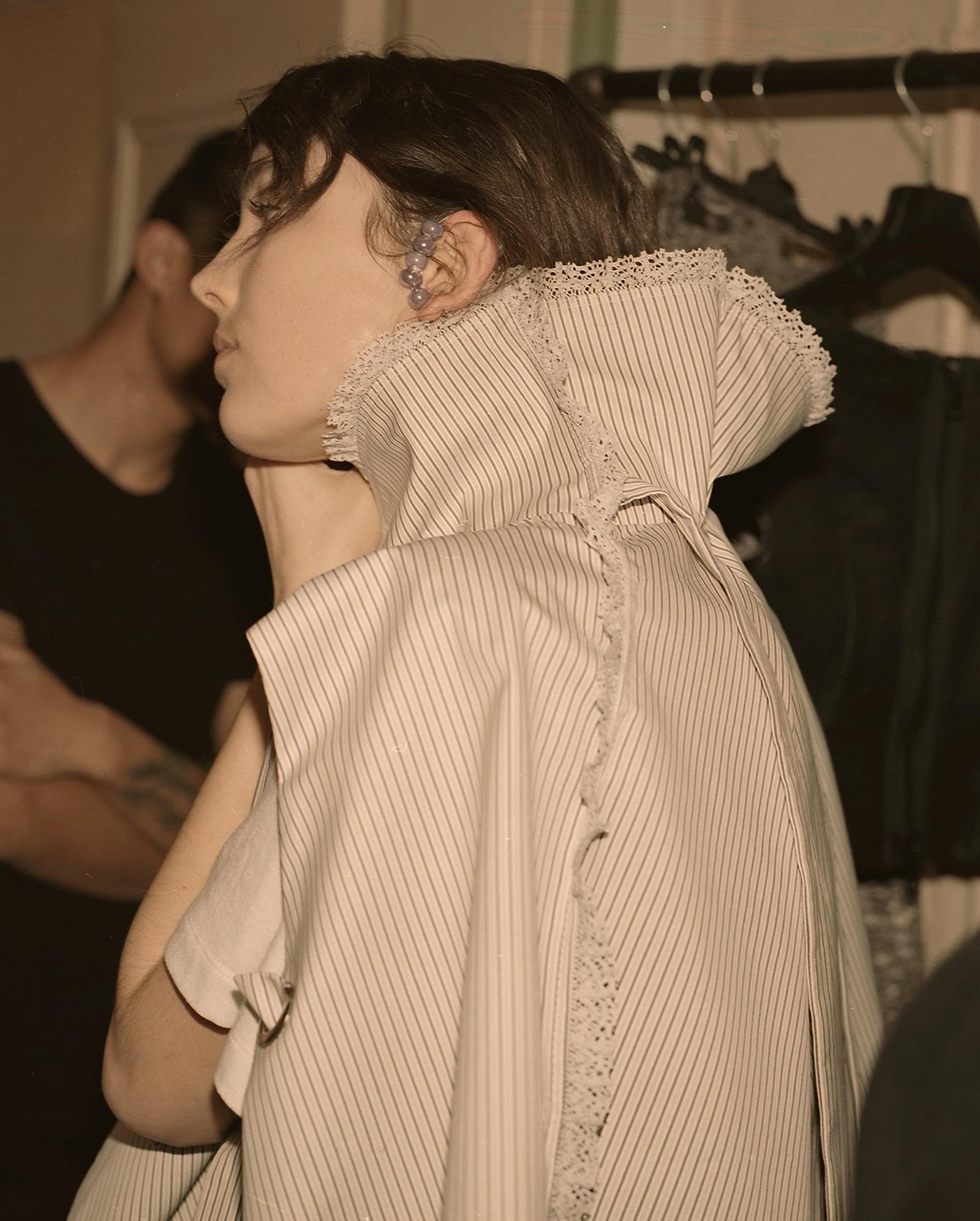
What Martens wanted was the sort of high-low mix that he sees as a reflection of multi-faceted, contemporary lives: “We have so many personalities in one day; I think it reflects that feeling of who we are.” He describes the aesthetic of his A/W16 collection as an “Elizabethan girl on acid” – and billowing bishop-sleeved tunics and shirts with high neck ruffs somehow meshed with spliced, sporty bombers and alt-aviator jackets constructed out of strips of shearling. Like the dilapidated library it was shown in, the clothes evoked a history that was somehow being denigrated. Those exaggerated sleeves came in Elastoplast pink and a so-wrong-it’s-right crushed velvet, and Martens was expressing a newfound burst of flirtatious femininity by opting to cast “girls who my straight male friends from Belgium would want to date”, who wore riff-offs of clubbing gear: hip-revealing catsuits, python and leather jackets and bodycon tops.
Martens’ play on proportions and disruption of familiar clothing tropes means that, quite often, Y/Project is talked about in the same breath as Vetements. Martens puts it down to a similarity in referencing and attitude; “Obviously we have the same kind of influences, since we are both the 90s generation, and we like to refer to the things we grew up with: the music I was dancing to, the video clips I was looking at. From my point of view, I always try to work with material or starting points which I think are a bit repulsive, and the job is making it really pretty or to change it completely.”

Both Gvasalia and Martens create clothes as products, as opposed to being overwrought with concept. “I never do moodboards,” said Martens. “I always start with a very detailed drawing or a technique that I want to explore.” Sure enough, on his desk is a very intricate product drawing of a pair of jeans constructed with inbuilt chaps. Along with pieces like a grey one-sleeved hoodie, Y/Project has its own familiar-yet-reconfigured design language for people to buy into.
“I really want to make clothes which are strong, in your face and wearable, and that’s the whole trick – it’s challenging and exciting,” he explains. “I totally appreciate different brands who have much more dramatic things going on, but what I want to propose is to really be able to find the middle ground between something social, something artistic and something sellable. It really has to have all of these things. I really would like that the clothes are a reinforcement of the person and not that the person’s hiding behind the clothes.”
Martens isn’t thinking about going beyond the first round of the LVMH Prize but, further down the line, he is pondering the idea of combining menswear and womenswear. Developing accessories are also on his mind. Straddling consultancy work and teaching gigs, Martens is keen to take Y/Project further – and, from the view on fifth floor in the 11th, Paris’ underbelly shines with possibility.

